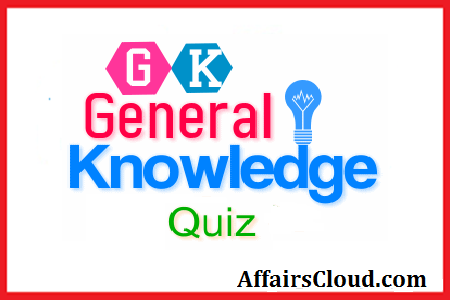Hello Aspirants. Welcome to Online General Knowledge section in Affairs cloud, which is important for all the competitive exams. We have created Some questions related to Indian GK(Indian Polity) !!!
- Which act provided a dual form of government (a “dyarchy”) for the major provinces ?
1.Indian Council Act, 1909
2.Government of India Act, 1919
3.Government of India Act, 1935
4.Indian Independence Act, 1947
5.None of theseAnswer – 2.Government of India Act, 1919
Explanation :
Government of India Act, 1919 provided a dual form of government (a “dyarchy”) for the major provinces. In each such province, control of some areas of government, the “transferred list”, were given to a Government of ministers answerable to the Provincial Council. - How many members included in the Constitution Drafting Committee ?
1.10
2.8
3.9
4.7
5.None of theseAnswer – 4.7
Explanation :
The Drafting Committee for framing the constitution was appointed on 29 August 1947.The committee comprised of a chairman and six other members. - ……………………………. is issued by the court in case of illegal detention of a person
1.Quo Warranto
2.Habeas Corpus
3.Mandamus
4.Certiorari
5.None of theseAnswer – 2.Habeas Corpus
Explanation :
Habeas corpus (“You may have the body”) is a recourse in law whereby a person can report an unlawful detention or imprisonment before a court, usually through a prison official - At the time of Emergency, the Indian State become unitary from …………………….
1.Semi Federal
2.Federal
3.Unitary
4.Quasi-federal
5.None of theseAnswer – 4.Quasi-federal
Explanation :
Professor K.C. Wheare, who regards the American constitution as the model of a true federation has described the Indian constitution as ‘quasi federal’, that is ‘a unitary state with subsidiary federal features rather than a federal state with subsidiary unitary features - In whose time period, the Panchayats were given the constitutional status?
1.V.P. Singh.
2.P.V. Narsimha Rao
3.Chandrashekhar.
4.Rajiv Gandhi
5.None of theseAnswer – 2.P.V. Narsimha Rao
Explanation :
The Constitutional (73rd Amendment) Act, passed in 1992 by the Narasimha Rao government - The 73rd Amendment provides a ………….. tier system of Panchayats
1.4
2.2
3.3
4.5
5.None of theseAnswer – 3.3
Explanation :
The Balwant Rai Mehta Committee was a committee appointed by the Government of India in January 1957 to examine the working of the Community Development Programme (1952). The Act aims to provide a 3-tier system of Panchayati Raj for all States having a population of over 2 million, to hold Panchayat elections regularly every 5 years
1.Village-level Panchayats 2. Block-level Panchayats and 3.District-level Panchayats. - Which states has a separate constitution?
1.J & K
2.Assam
3.Punjab
4.Sikkim
5.None of theseAnswer – 1.J & K
Explanation :
The State of Jammu and Kashmir has been accorded special status under Article 370. Interestingly, till 1965, J&K had a Sadr-e-Riyasat for Governor and Prime Minister in place of Chief Minister - The first Municipal Corporation in India set up at ……………………………
1.Pune
2.Madras
3.Delhi
4.Mumbai
5.None of theseAnswer – 2. Madras
Explanation :
Madras Municipal Corporation The first municipal corporation was set up in India in 1687 at Madras preceding the Bombay and Delhi municipal corporations. - ………………………….. is called the Father of Indian economic reform
1.Indira Gandhi
2.Manmohan Singh
3.Narendra Modi
4.Jawahar Lal Nehru
5.None of theseAnswer – 2.Manmohan Singh
Explanation :
Manmohan Singh, best known as ‘ father of Indian Reforms’, has emerged as the Congress party’s frontrunner, the 14th Prime Minister of India and also the first Sikh to have reached the country’s top legislative position. - The preamble was drafted and moved by …………………………..
1.B.R. Ambedkar
2.Dr.Rajendra Prasad
3.Jawahar Lal Nehru
4.Mahatma Gandhi
5.None of theseAnswer – 3.Jawahar Lal Nehru
Explanation :
The preamble which is based on the “Objectives Resolution” was drafted and moved by Pandit Jawaharlal Nehru and adopted by the Constituent Assembly. It has been amended by 42nd Constituent amendment Act, 1976 by which three new words – Socialist, Secular and Integrity were adopted
AffairsCloud Recommends Oliveboard Mock Test
AffairsCloud Ebook - Support Us to Grow
Govt Jobs by Category
Bank Jobs Notification



